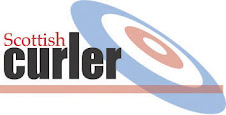Two seminars were held last Saturday morning at
Glenrothes and gave a good insight into a couple of the Royal
Caledonian Curling Club's current initiatives in our sport. The first of these, on 'Club Development' was presented by Development Manager Gordie Kennedy, assisted by Area Development Officers David Horne and Judith
McFarlane. Gordie used an analogy of whisky production to highlight the steps involved in 'curler production'! The seminar introduced a new Club Development Manual, which forms part of the
RCCC's long term player development strategy, set to be rolled out in the year ahead. At the heart of the plan is each curling club, although the focus is really towards ice rinks, and the benefits for all twenty-five Scottish rinks having a 'development group'.

The Club Development Manual has been created and supplied with funding from
sportscotland and will be rolled out to ice rinks before the beginning of next season. Gordie is leaving his post soon, and this initiative will have to be picked up by his successor.
The job is currently being advertised.
National Coaching Officer Lynne Robertson revealed her plans for a coach education pathway, complementing the long term player development strategy. This involves seven possible levels to be attained, from 'assistant coach' who helps out teaching beginners, to 'high performance team coach'. Progression is underpinned by the availability of learning modules, which can be tapped into by each coach as required.
Following Lynne's seminar, the independent
Scotcurl Coaches Association met for the last time. At an
EGM, members voted that the group be wound up, and a new
RCCC Coaching committee is to be formed.
So what else does the future hold? The
Scottish National Party's manifesto undertakes to do away with
sportscotland. As the quango is curling's major source of funding, this could have major implications for the sport. Certainly it must be an uncertain time for those employed at
sportscotland's premises at the
Gyle in Edinburgh, already under pressure with the proposed move to new headquarters in Glasgow, sited in the new national indoor sports arena and velodrome complex being built in association with the bid to host the 2014
Commonweath Games. CEO Colin
Grahamslaw is in touch with the Minister for Communities and Sport, Stewart Maxwell, and does not expect anything to change immediately. Doug
Gillon's take on all this can be found
here.
The Royal Club itself, overflowing its own headquarters at
Cairnie House, will have to relocate anyway as Edinburgh Airport expands into the
Ingliston Showground site. Interesting times lie ahead!
The practical aspects of how club members should be represented on the Area Standing Committee is still being discussed. At issue is whether the status
quo of election from Areas be maintained, or whether representation should be from ice rinks. The Ladies Standing Committee already uses the latter way of forming their committee.
The 'mission' of the new Royal
Caledonian Curling Club Board in the year ahead, as revealed by Chairman Mike Ferguson at the
AGM, has two strands: to increase participation on and off the ice, and to increase medal success. Success will be easy to judge at next year's
AGM on June 14, 2008. And that day may be different too. Under discussion are proposals for a 'conference' with an expanded programme of seminars, the
AGM, all followed up by the Gala Awards Dinner in the evening.
 Colin Dick, Lindsay Gray, Ally Fraser and Ian Copland, who won the Royal Club's U-17 Grand Slam last season, together with Anna Sloan, Lauren Gray, Rhiann Macleod and Caitlin Barr, who were the highest-up girls' rink, set off today for the World Curling Federation's Summer Camp in Fussen, Germany. The trip was the prize for the Slam event which comprised four under-seventeen competitions in different rinks in its first successful season.
Colin Dick, Lindsay Gray, Ally Fraser and Ian Copland, who won the Royal Club's U-17 Grand Slam last season, together with Anna Sloan, Lauren Gray, Rhiann Macleod and Caitlin Barr, who were the highest-up girls' rink, set off today for the World Curling Federation's Summer Camp in Fussen, Germany. The trip was the prize for the Slam event which comprised four under-seventeen competitions in different rinks in its first successful season.





































